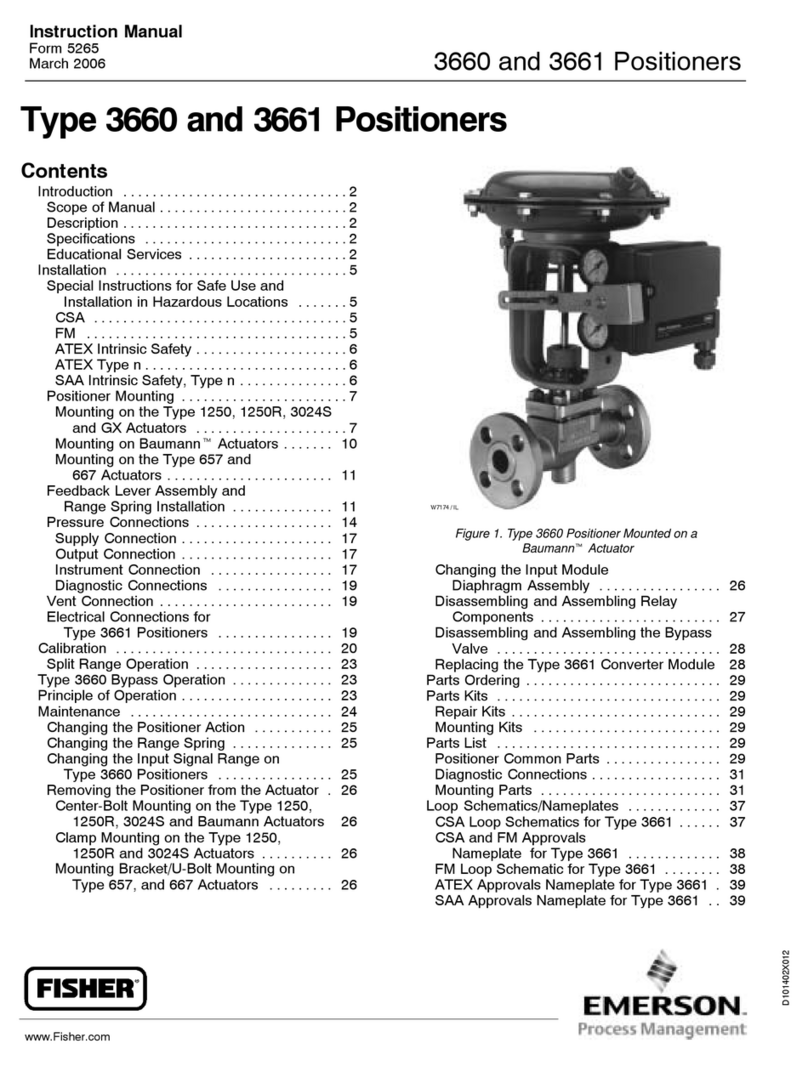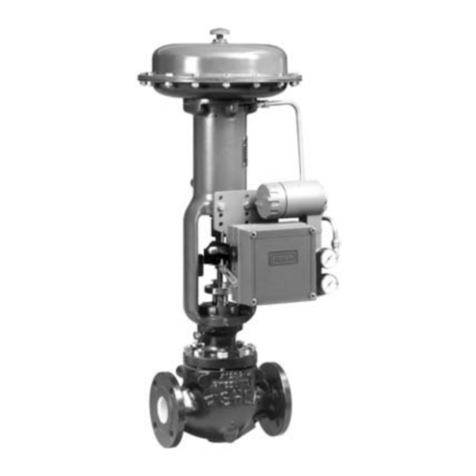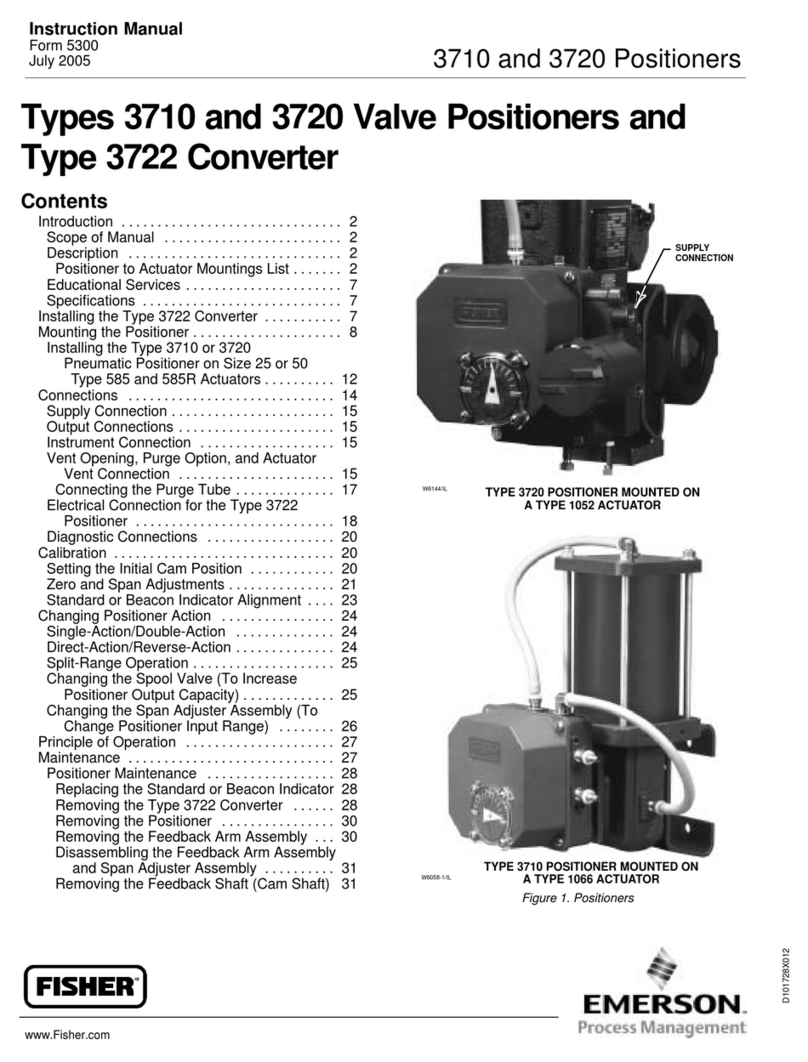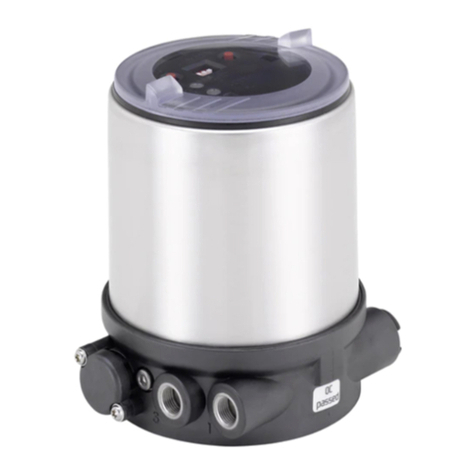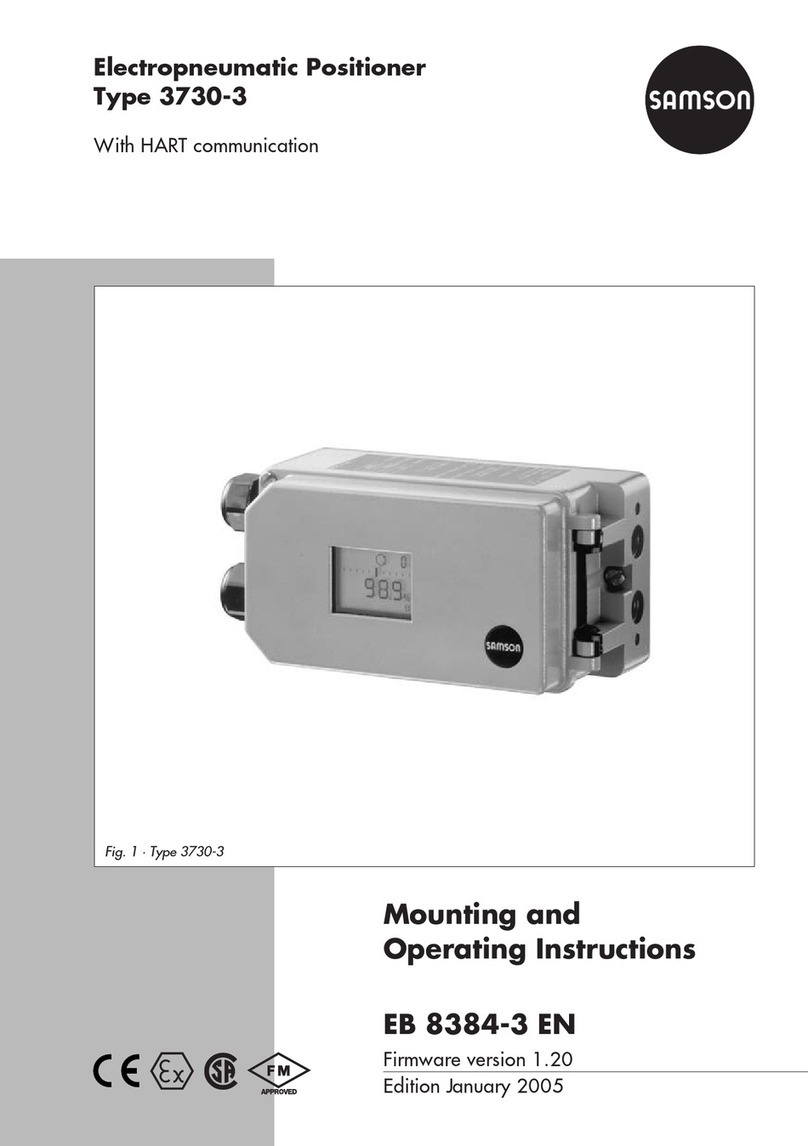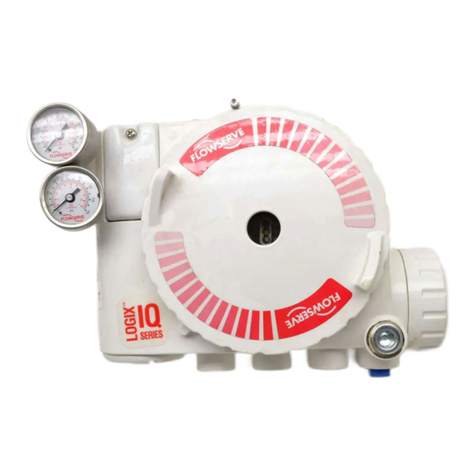
Table of Contents i
Installation, Operation, and Maintenance Manual
ES-09373-1
Table of Contents
August 17, 2022
Contents
Section 1: Introduction 1
1.1 General Notes ............................................................................ 1
1.2 Proper Use.................................................................................. 1
1.3 Qualified Technical Staff............................................................. 2
1.4 Exclusion of Liability ................................................................... 2
Section 2: Specifications 3
Section 3: Overview 5
3.1 Enclosure ................................................................................... 6
3.2 Identification Label Information ................................................. 6
3.3 Scope of Supply.......................................................................... 7
Section 4: Principle of Operation 8
Section 5: Mechanical Installation 10
5.1 What are Rotary Pneumatic Actuators?..................................... 10
5.2 What are Pneumatic Linear Actuators?...................................... 10
5.3 Rotary Actuator Installation ...................................................... 11
5.3.1 Mounting the Rotary NAMUR Bracket to the Actuator.. 12
5.4 Linear Actuator Installation ....................................................... 15
5.4.1 Assembling the Guide Arm ........................................... 16
5.4.2 Installing the Feedback Lever and Bracket..................... 16
5.4.3 Yoke Castle Mount........................................................ 17
5.4.4 Mounting on a Pillar Type Castle ................................... 17
5.4.5 Types of Feedback Lever................................................ 18
5.4.6 Standard Installation..................................................... 19
Section 6: Pneumatic Connections 24
6.1 Manifold Types.......................................................................... 25
6.2 Pneumatic Connection on Rotary Actuator ............................... 26
6.3 Pneumatic Connection on Linear Actuator ................................ 26
Section 7: Electrical Connections 27
7.1 Cable Entry ............................................................................... 27
7.2 Grounding ................................................................................ 28
7.3 Electrical Connection................................................................ 28
Section 8: Configuration 30
8.1 Configuration Buttons............................................................... 30
8.2 Entering and Navigating the Configuration Menu...................... 31
8.3 Fast Callibration ........................................................................ 32
8.4 Configuration Menu.................................................................. 33
8.4.1 Setup Menu ................................................................. 34
8.4.2 PID Menu ..................................................................... 35
8.4.3 CTR Menu .................................................................... 40
8.4.4 T OUT Menu................................................................. 42






